The topic of this article is the concept “chronotope”, created by the great Mikhail Bakhtin, and its use in advertising. This notion is one of the most important in the theory of literature. It also helps a lot of other sciences — theory of communication, applied psychology, psychoanalysis, theory of theatre and cinema, and particularly advertising, other marketing communications and marketing transmedia. The analysis of this concept is done from the standpoint of semiotics and its four parts — alphabetics, semantics, syntactics and pragmatics. The following chronotopes — Female and Male; Ordinary and Mythological; Central and Peripheral; Ordinary and Elevated; “Raw” and “Cooked” chronotopes — are examined in the first part of the article. The chronotopes are studied from the standpoints of semantic field and metaphors in the second part — semantics of chronotopes. The third part examines chronotopes as part of syntactics. The different chronotopes’ links (in the text; between the text and the context; and between the formal and content aspects of texts) are analyzed here. The theory of ad appeals and chronotopes is the topic in the fourth part of the article — pragmatics of chronotopes. The theory of ad appeals (the main psychological drive (motif) for the customers) is integral part of pragmatics. The reason is that the commodity (product) is one and the same, but the different consumers (women, men, with different attitudes, with different education, from different cultures — Russians, French, etc.) are attracted (appealed) to goods because of various emotional and rational reasons. That is why the admen communicate the goods in different ways for the numerous consumer groups and the ad specialists use dissimilar signs accordingly. Due to the volume of the article, only a small part of the big (huge) potential of this universal concept for advertising theory and practice is analysed here.
Понятие «хронотоп» М. М. Бахтина: знаки времени и пространства в рекламе
с точки зрения семиотики
В статье рассматривается понятие хронотопа, предложенное известным ученым М. М. Бахтиным, и способы его использования в рекламном тексте. Хронотоп является одним из ключевых понятий в теории литературы, но последнее время активно используется и в других науках — теории коммуникации, прикладной психологии, психоанализе, теории театра и кино, маркетинговых коммуникациях и маркетинговых трансмедиа. Анализ этого понятия осуществлен с точки зрения семиотики и ее четырех составляющих: алфабетики, семантики, синтактики и прагматики. В первой части статьи рассматриваются следующие хронотопы: женский/мужской; обычный/мифологический; центральный/периферийный; низкий/высокий; сырое/готовое. Во второй части статьи рассматривается семантика хронотопов: хронотопы анализируются с точки зрения семантического поля и метафор. Третья часть статьи посвящена хронотопам как части синтактики. Здесь анализируются различные связи хронотопов (в тексте, между текстом и контекстом, а также между формальными и содержательными аспектами текстов). Теория рекламной апелляции и хронотопов является содержательной компонентой четвертой части статьи — прагматики хронотопов. Теория рекламной апелляции (основной психологический мотив для потребителей) является интегральной частью прагматики. Суть теории состоит в том, что один и тот же товар рассчитан на разных потребителей (женщины, мужчины, имеющие разные взгляды, образование, являющиеся представителями культур — русские, французы и т. д.), привлеченных к товарам по различным эмоциональным и рациональным причинам. Именно поэтому рекламисты по-разному представляют товары для различных групп потребителей, используя при этом, соответственно, разные знаки. Ввиду ограниченности объема статьи в ней анализируется лишь небольшая часть огромного потенциала этого универсального для теории и практики рекламы понятия.
Christo N. Kaftandjiev — Dr. Sci. in Philology, Professor;
christokaftandjiev@yahoo.com
Sofia University “St. Kliment Ohridski”,
49, ul. Moskovska, Sofia, 1000, Bulgaria
Larisa V. Ukhova — Dr. Sci. in Philology, Associate Professor;
larissauchowa@mail.ru
Yaroslavl State Pedagogical University named after K. D. Ushinsky,
66, Kotorosl’naia nab., Yaroslavl, 150049, Russian Federation
Кафтанджиев Христо Николов — Dr. Sci. in Philology, Professor;
christokaftandjiev@yahoo.com
Софийский университет им. Св. Климента Охридского,
Болгария, 1000, София, ул. Московска, 49
Ухова Лариса Владимировна — Dr. Sci. in Philology, Associate Professor; larissauchowa@mail.ru
Ярославский государственный
педагогический университет им. К. Д. Ушинского,
Российская Федерация, 150000, Ярославль, Которосльная наб., 66
Kaftandjiev, Сh. N., Ukhova, L. V. (2018). Mikhail Bakhtin’s chronotope: signs of time and space in advertising from the point of view of semiotics. Media Linguistics, 5 (4), 494–520.
URL: https://medialing.ru/mikhail-bakhtins-chronotope-signs-of-time-and-space-in-advertising-from-the-point-of-view-of-semiotics/ (accessed: 25.04.2024)
Kaftandjiev, Сh. N., Ukhova, L. V. (2018). Mikhail Bakhtin’s chronotope: signs of time and space in advertising from the point of view of semiotics. Медиалингвистика, 5 (4), 494–520. (In English)
URL: https://medialing.ru/mikhail-bakhtins-chronotope-signs-of-time-and-space-in-advertising-from-the-point-of-view-of-semiotics/ (дата обращения: 25.04.2024)
UDC 8
The notion chronotope, created by the great Mikhail Bakhtin, is one of the most important in the theory of literature. This concept also helps other sciences — such as theory of communication, and particularly marketing communications and advertising. The article demonstrates some of the advantages of the term “chronotope” with regard to advertising. Due to the size of the article, only a small part of the large (huge) potential of this universal concept for advertising theory and practice is analyzed.
Chronotope deserves a voluminous scientific book analyzing how this concept is applied in advertising. One of the main problems of a big number of ad specialists around the world and of the lecturers in this field is that they do not know at all or in some degree the theory of literature, general linguistics or semiotics. The reason is that these disciplines are taught only at the philological faculties, and semiotics in most cases is neglected or absent at all.
For the first time this notion had been introduced in psychology by Alexej Uhtomskij. In the thirties of 20th century, Mikhail Bakhtin applied this concept in literary theory. Some ancient philosophers also analyzed this phenomenon. In the more recent times, Hegel interpreted time and space as related concepts. The conclusions of Einstein in his theory of physics are similar. Some parts of Vladimir Vernadskyij’s theory on noosphere are also based on the unity of time and space.
Some of the most important Russian books on chronotope are the following: Akhundov M. D. Kontseptsii prostranstva i vremeni: istoki, evoliutsiia, perspektivy. Moscow, 1982; Bakhtin M. M. Formy vremeni i khronotopa v romane. Ocherki po istorii poetiki. Literaturno-kriticheskie stat’i. Moscow, 1986; Gurevich A. Ia. Kategorii srednevekovoi kul’tury. M., 1984; Ritm, prostranstvo i vremia v literature i iskusstve. Leningrad, 1974; Trubnikov N. N. Vremia chelovecheskogo bytiia. Moscow, 1987; Florenskii P. A. Vremia i prostranstvo. Sotsiologicheskie issledovaniia. 1988. № 1.1
The term “chronotope” is analysed in this article on the basis of the four branches of semiotics:
- Alphabetics — the science of alphabets of different sign systems;
- Semantics — the science of meaning;
- Syntax — the science which analyses the connections of signs in texts;
- Pragmatics — the science which analyses signs from the standpoints of different peoples — on the basis of their social, psychological, national, cultural, educational, physical and other characteristics.
Some ad chronotopes are also analyzed in the article on the basis of theory of narratives and theory of archetypes.
Only books of Western authors on chronotope, semiotics, narrative theory and archetypes are analysed in the literary review. The reason for this is that the audience of this scientific journal knows very well the Russian scientific literature in these areas.
Chronotope. Russian scholars know very well the work of Professor Mikhail Bakhtin — one of the greatest world minds in theory of literature. Because of this, the stress in this review is on the books of western scholars, working on scientific legacy of Mikhail Bakhtin.
One of the most important books of Western scholars with regard to the chronotope, introduced by Mikhail Bakhtin is “Bakhtin’s Theory of the Literary Chronotope: Reflections, Applications, Perspectives”. The book is divided into four chapters in which the philosophical aspects of chronotope, the significance of chronotope for literary history and theory, and so on, are analysed in depth [Bemonget et al. (Eds.) 2010].
The most significant aspects of Mikhail Bakhtin’s works (including the chronotope) are analysed in the book “Mikhail Bakhtin” by Katerina Clark and Michael Holquist. Bakhtin did not create this holistic and integrative concept accidentally. One of the main reasons for this had been the broad interests of the Russian scientist in a number of scientific fields — such as linguistics, semiotics, anthropology, etc. [Clark, Holquist 1984].
In his book Alastair Renfrew analyses many relevant concepts, created by Mikhail Bakhtin — such as dialogism, heteroglossia, carnival culture and chronotope. One of the most important conclusions here is about the universal nature of chronotope and its applications in various scientific fields [Renfrew 2014].
Semiotics and Advertising. The book of Sebeok is a significant scientific achievement that influences every semiotician, working in the field of advertising and other mass and marketing communications. The book explores many valuable concepts, connected with numerous sign systems, various rhetoric figures, marketing narratives, different aspects of mythology and their use in advertising and other marketing communications [Umiker-Sebeok 2012].
Ron Beasley and Marcel Danesi thoroughly explored the different print and electronic ads from the point of view of semiotics. The main focus is on the persuasive function of signs [Beasley, Danesi 2002].
Semantics. Kate Kearns is a leading world scientist in the field of semantics. Her book explores some of the most important semantic concepts — generalized quantifier theory; referential opacity; lexical conceptual structure; discourse representation theory; semantic composition; narrative time; etc. [Kearns 2011].
The book of Cliff Goddard “Cross-linguistic Semantics” is relevant study in intercultural semantics. It analyses in depth how one and the same phenomenon is expressed in different languages. Because of this the book is important for advertising as well. In this specific communication one and the same product is expressed in different ways depending on the requirements of different consumer groups [Goddard 2008].
Metaphor. The book of Lakoff and Johnson “Metaphors we live by” is probably the world’s leading research in this field. There is no serious scientific research on tropes, which does not refer to this scientific masterpiece. The metaphors are analysed here from different points of view, detailed classifications of tropes are proposed and the metaphorical mechanism is explained in details [Lakoff, Johnson 1980].
Another important book in this field is the “The Rule of Metaphor: The Creation of Meaning in Language” by Paul Ricoeur. The world-famous linguist analyses in depth metaphors (tropes) from different standpoints — analogy attribution, changes of meaning, connotation/denotation, context, mimesis, polysemy, etc. [Ricoeur 2004].
In his study, Evripides Zantides explores the relations between the metaphorical mechanisms and those of intertextuality. Many of the most effective verbal and iconic metaphors are created on the basis of intertextuality [Zantides 2016].
The Lee’s “The Doublespeak of Empowerment Tropes” article examines the creative potential of metaphors and some other tropes. The article proposes important conclusions, which can be used in advertising [Lee 2014].
One of the leading contemporary scientists in the field of marketing semiotics is George Rossolatos. In one of his articles he thoroughly analyses the creative and semiotic mechanisms of a large number of verbal-visual rhetorical figures [Rossolatos 2014].
Professor Rossolatos explores the isomorphism of the different verbal and iconic stylistic figures in a number of ads in another article. The biggest part of creative ads is done with the help of these stylistic figures. This is the main reason why metaphors and all the other tropes are so important for advertising [Rossolatos 2013].
Various trope mechanisms are analyzed from many relevant standpoints in the book “Aspects of Metaphor”. The authors of this book are some of the leading scientists in the theory of tropes [Hintikka 1994].
Syntactics. Talmy Giv.n in his book “Syntax: An Introduction” analyses in depth this linguistic and semiotic science. The study is especially valuable because it demonstrates the links of syntax with pragmatics and semantics. This is a rare approach, because usually all of these sciences are studied separately. [Giv.n 2001].
Connections are of key importance for the syntax. This is the reason why the concept “connectionism” has been introduced. In this case however, the study is less linguistic than psychological — because connectionism is part of cognitive science [Pinker, Mehler 1988].
Pragmatics. Wolfram Bublitz and Neal Norrick are the authors of a book on pragmatics, which analyzes social interactions based on social contexts, because they are very important for the effectiveness of communications. The same applies to the psychological contexts, the gender of communicators, their level of education, and many other sociological and psychological variables [Bublitz, Norrick 2011].
Gisle Andersen and Karin Aijmer wrote an important book on pragmatics, analysing communications according to communicators’ age, gender, class, religion, and so on. Communicators create, alter, edit, etc. the texts according to each of these and other characteristics. Thus, the two authors introduced the term “variational pragmatics”. They also analysed other important pragmatic concepts — for example “politeness”. This notion is examined in details by many Western scientists [Andersen, Aijmer 2012].
Protagonist. The book “The Multi-Protagonist Film” explores some aspects of the protagonists in films depending on history-rom the creation of cinema to the present days, depending on the different film genres, depending on some important features of modern culture, etc. [Azcona 2010].
Archetype of centre. The mythology and archetypes are closely related to pragmatics. The reason is that different myths and archetypes strongly influence the communicators. Mythological and archetypal thinking shapes the architecture. The archetype of centre is particularly important for architecture. The reason is that the most important and expensive buildings are always cantered in the religious, ideological, political, etc. toposes. Some of these phenomena are thoroughly analyzed in W. Lethaby’s book “Architecture, Mysticism and Myth” [Lethaby 2018].
Definition of the chronotope. The chronotope (from ancient Greek “chromos” — time and “topos” — space) is a concept which expresses time and space as deeply connected and related elements in various texts.
Because of this chronotope is holistic and synergetic notion.
The famous Russian professors on literature theory Mikhail Bakhtin created and introduced this concept in the 1930s. He was aware of the fact that it is impossible to separate time characteristics from spatial ones.
The interest of linguists in this respect is not accidental. The authors very well choose and structure the temporal and spatial characteristics of narratives and other communications in order to express certain meanings. And so do the admen in advertising and in other marketing communications.
Space and time have all necessary semiotic characteristics. The obvious reason is that communicators express with their help different and numerous meanings.
Alphabetics of the chronotopes. The admen can use the whole potential of chronotopes in advertising, if they are aware of their alphabet. It means that the admen must know which are the most important of them and how to organize (structure) chronotpes in pairs of oppositions — for example:
- female / male chronotopes;
- ordinary / mythological chronotopes;
- central / peripheral space;
- “raw” (natural) / “cooked” (civilized) chronotopes, etc.
The female and male chronotopes. This is a fundamental opposition because the admen express basic psychological and role-playing characteristics of both genders and the goods they prefer.
Woman’s space is mostly domestic, internal, safe, rich, civilized, sophisticated, and so on. Photos of fashion items (Fig. 1a–1c) accentuate these characteristics.
The beautiful girls are positioned in rich and sophisticated interiors that express the meanings of:
- femininity (pink colours);
- sophisticated civilization (fine furniture and wallpaper);
- the feminine nature (abundance of flowers);
- feminine eroticism, etc.
Temporal characteristics are not so obvious in these interiors, but we could find some of them. For example the photo with the flowers is a good example in this respect. This is because the flowers are signs of spring (as temporal part of the year).



The male space is open, dangerous and wild. Typical examples in this respect are some ads of cigarettes of the seventies of the previous century (Fig. 2a–2e).
The super heroes (bearded and sweaty mountaineers, motor bakers, drafters, etc.) are in the centre of treacherous and wild nature places (toposes) — deserts, jungles, mountain rivers, prairies, etc. They risk constantly their lives because of dangerous adventures. These cigarette ads are emanation of the adventurous and dangerous male will — from the perspective of the chronotope and the actants (the main protagonists and antagonists).

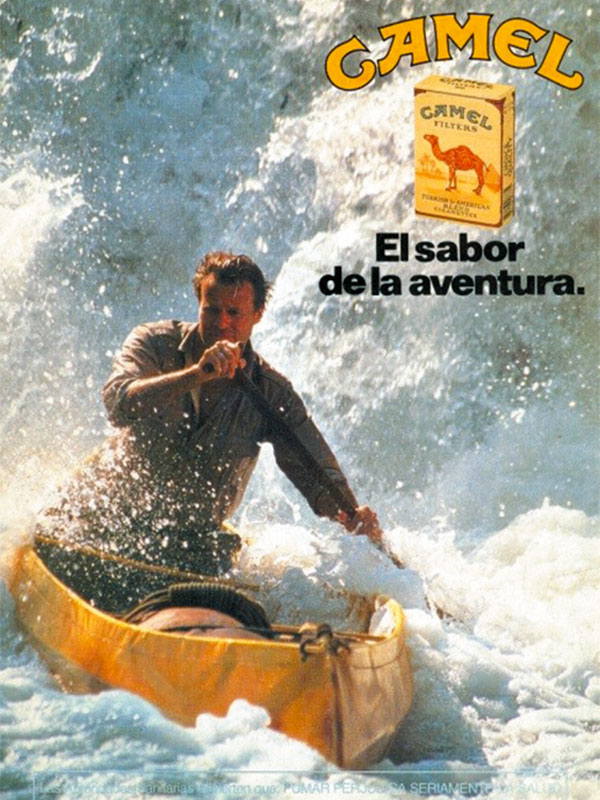



However, the temporal characteristic “sunny weather” does not express well the idea of danger, and hence — the meanings of masculinity. Therefore, in four other ads (Fig. 3a–3d) with masculine chronotopes, the weather is depressing (gloomy).

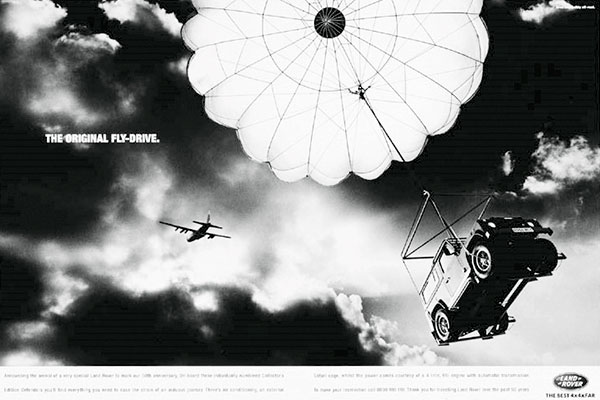


The cars are in wild and dark places — in the middle of black rocks, glaciers, mountain rivers, and even parachuting in the gray sky. Thus, the admen used the appeals of male power effectively — in this case also the main psychological characteristic of advertised cars.
The ordinary and mythological chronotopes. The mythological chronotope is the place of the extraordinary heroes and immortal gods and it is above the ordinary human spatial and temporal dimensions. The heroes (in three car ads — Fig. 4a–4c) with the help of powerful masculine pickups managed to find mythical cities hidden in the deep jungles and mountains.



Mythological thinking is also related to the idea of hell and paradise. Hell is a hot topos in which the sinners are fried and grilled.
In the toothpaste ad (Fig. 5), the admen used the hellish chronotope — glowing, red and plenty with all kind of satanic orks and torture instruments.
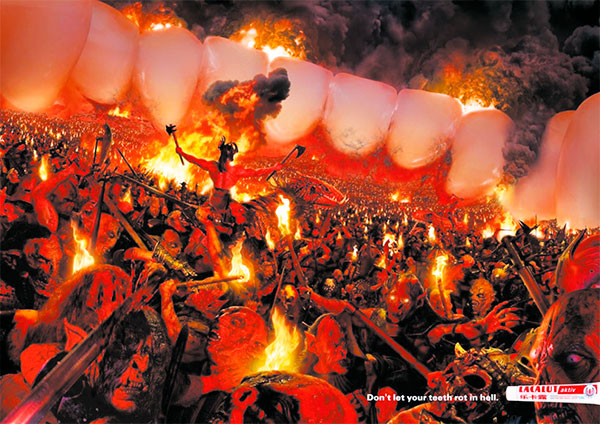
By this redundant iconic metaphor the consumers are warned to keep their teeth clean, otherwise they will suffer forever — as in the hell.
Similar chronotopes are also suitable for youth audiences. A pair of young vampires is demonstrated in two ads of jeans (Fig. 6a, 6b).


The reason for this is the postmodern thinking. It creates a natural communications that opposes the artificial and false discourse of official culture — the communications of politicians, church, universities and other moralizers. Thus, the youth chronotope demonstrates the satanic psychological essences of jeans — sexuality, sin, night, and so on.
Paradise is the bright focus of attractive places (toponemes) and time characteristics (temopremes) — flowers, trees, birds, wonderful weather, etc. Thanks to the powerful jeep (Fig. 7a–7c) we can also get right there easily.



Central and peripheral toposes. The idea of the centre is an integral part of mythological and archetypal thinking. Mircea Eliade has thoroughly analysed this phenomenon in the “Myth of Eternal Return”.
According to him, an analogue in heaven corresponds to every terrestrial form. The ancient Egyptians, Greeks and Christians structured the space accordingly.
Eliade formulated the architectonic symbolism of centre as follows:
- “the sacred Mountain, where the Heavens and the Earth meet, is in the centre of the world;
- each temple or palace — and, more widely, each sacred city or royal residence — is also a “holy mountain”, thus becoming a centre;
- being Axis Mundi, the city or the sacred temple is seen as the point where Heaven,
Earth and Hell meet” [Eliade 1964: 98].
The myth of the centre is deeply embedded in the human subconscious, and people unconsciously define a centre for their various activities — ideological, cultural, advertising, etc.
Undoubtedly the centre of romance and love is Paris and Venice. It is not by chance that most women dream to be there during their honeymoon. Admen exploit these toposes mercilessly. In several ads (Fig. 8a, 8b) the romantic action is centered in Paris.
The two ads of this sequence are in blue, which is the colour of romantics — according to the European continental culture.
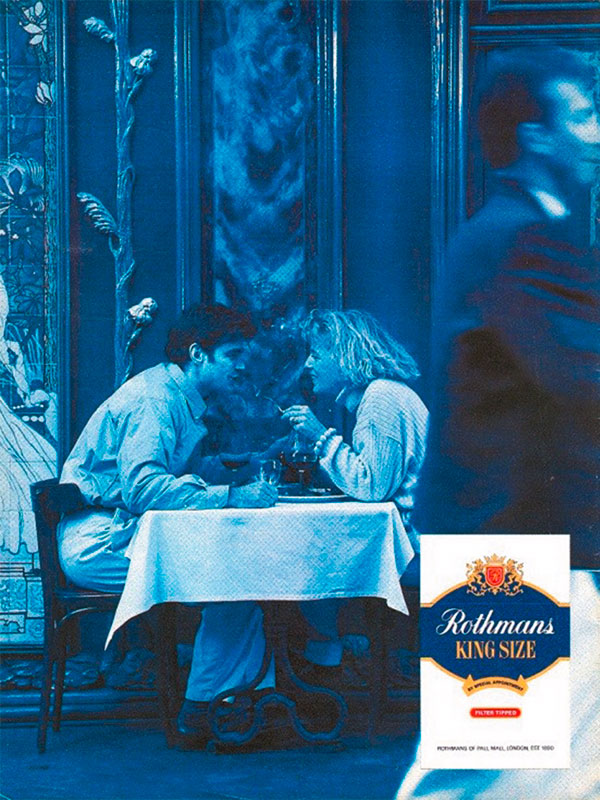
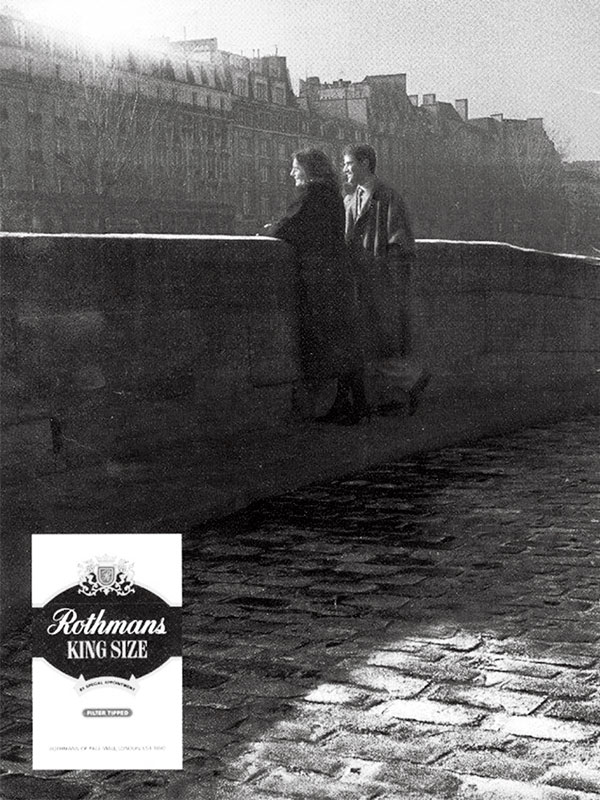
The ordinary and elevated chronotopes. The admen putt a sign of metro in museum (or palace) in an ad (Fig. 9).
Thus, they combined two opposing characteristics — of sublime and of common (ordinary life).
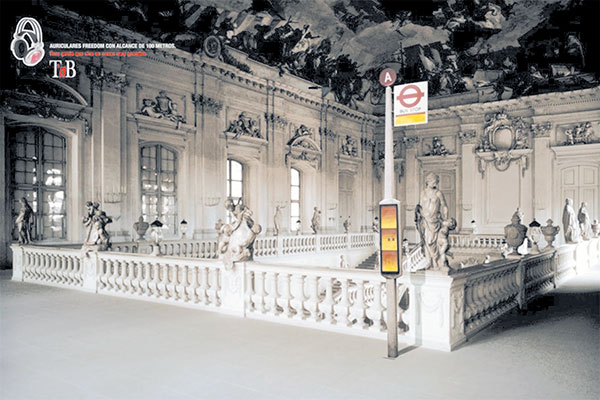
The “raw” and “cooked” сhronotopes. This structuralist (and metaphorized) terminology reflects the idea of maturing man and the ways in which he transforms nature into culture. Four ads of a construction company (Fig. 10a–10d) demonstrate how a natural space is transformed into a cultural one.
Ionic metaphors integrate the natural and cultural phenomena very well.




Semantics of the chronotopes. Semantics is the science that examines the meanings of signs. One of the central concepts here is “semantic field”. Semantic field is a topos metaphor for the place, where all signs for a given phenomenon are collected. For example the semantic field of love is done with the help of signs of “heart”, “flower”, “love”, “music”, “passion”, etc.
Interesting examples in this respect are the chronotopes, thanks to which the admen express the concepts of Italianness in the 2009 Lavazza coffee calendar (Fig. 11a–11f).
Beautiful Italian girls are against the background of typical Italian historical, mythological and natural spaces — cities (Rome, Venice), palaces, rivers, landscapes, the Coliseum, and so on.
These chronotopes are also used in the integrated marketing communications of Lavazza. The company organized a special event — a big cocktail party in one of the most impressive palaces in Rome.
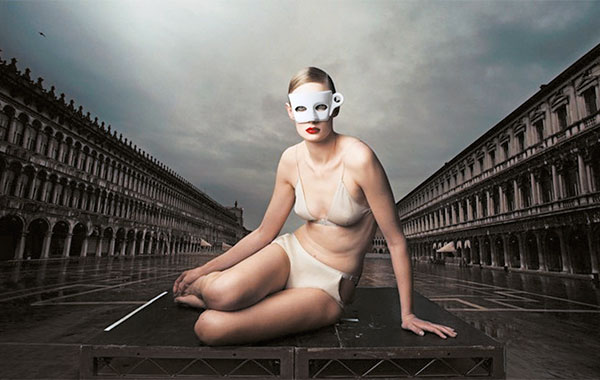


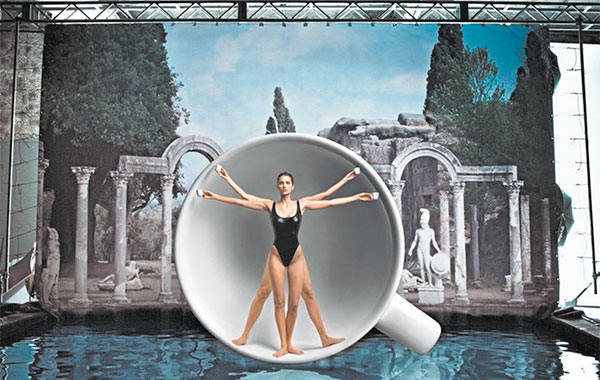

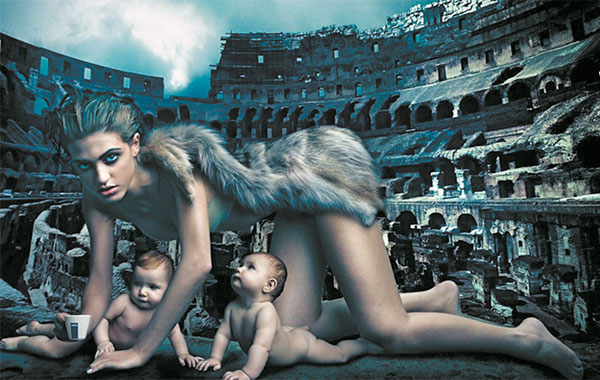
Stylistic devices — hyperboles, metaphors, metonymies, etc. are also part of semantics. In several Diesel ads (Fig. 12a–12d) the admen used the idea of ecology, showing big natural catastrophes in some toposes.
New York and the whole US are almost under water, the Great Wall of China is in a sandy desert, and the temperature in Venice is tropical — big parrots instead of local pigeons are in the square of San Marco.




Similar postmodern appeals have also been used in a series of social ads against violence (Fig. 13a–13c).
Topos, full of violence, wars and natural disasters, is located metaphorically on a conveyor belt. Thus, the admen expressed the philosophical idea of infinity of pain and suffering.

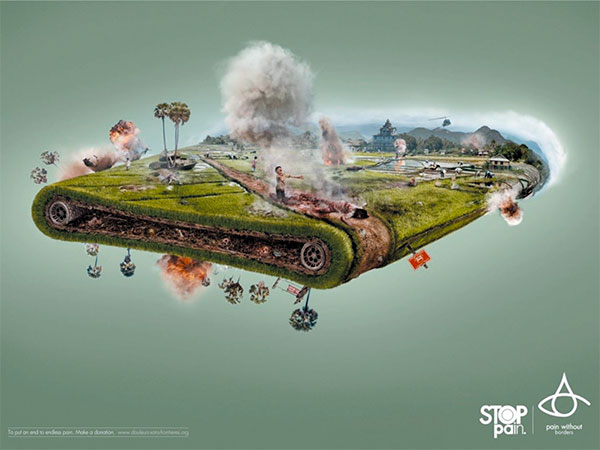

The same approach is used in three ads of financial media (Fig. 14a–14c) with the headline “Understand the true value of money”.
In this case, the admen metaphorized some of the leading world currencies — with the help of a megapolis (urban toposes), destroyed by wars, pollutions and other cruel disasters.
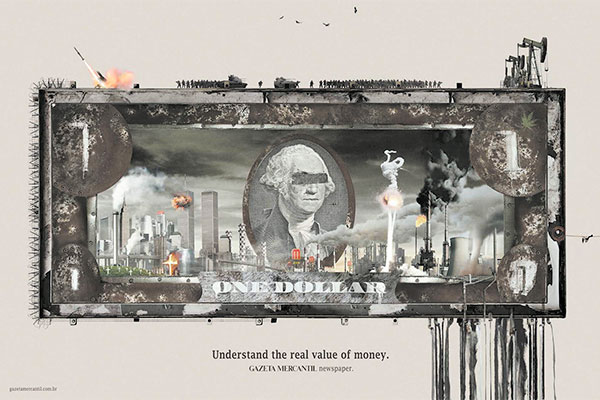
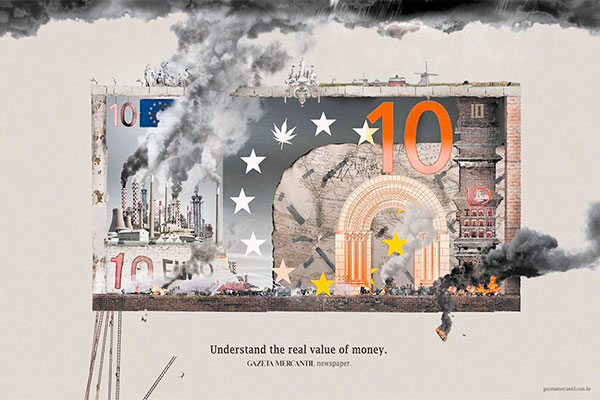
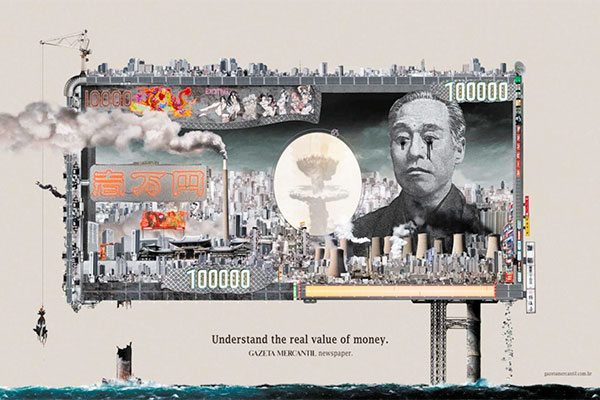
In this bloody series the sadistic personification is also in the ad of a car (Fig. 15), which is not afraid of the terrible obstacles along the road (also a specific topos).

Syntactics of the chronotopes. Syntactics is the semiotic science of texts or how the communicators connect the signs to build the different texts.
The connections are numerous and different:
- in a text;
- between text and context;
- between formal and content aspects of the texts, etc.
All the ads, analyzed so far, can be interpreted from a syntactic point of view as well. For example, the ads of the construction company (Fig. 10a–10d) showing how a natural space is transformed into cultural is an excellent example of strong inter-textual connectivity.
Outdoor ads on sex shops (part of the urban topos) (Fig. 16a, 16b) is a perfect example of links of ad text with an urban context.
Links are the metaphorized black editing strips which conceal some parts of beautiful female bodies.
These strips integrate sexual discourse (bodies) with the context — the surrounding social environment (topos) to which sexual ad appeals are contraindicated. This way, the overall urban text (consisting of outdoors with sexual content and the asexualized social environment) is harmonized and functions smoothly.
The strips in this case are creative solution because it is both:
- an edited mark (sign), which makes erotic messages acceptable to the public.;
- directional mark because the black strips indicate where the stores are.
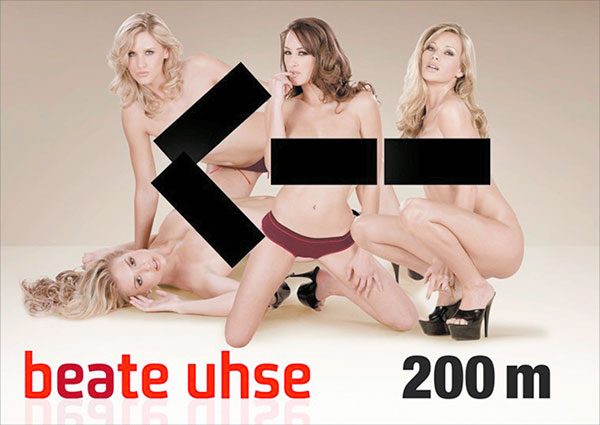
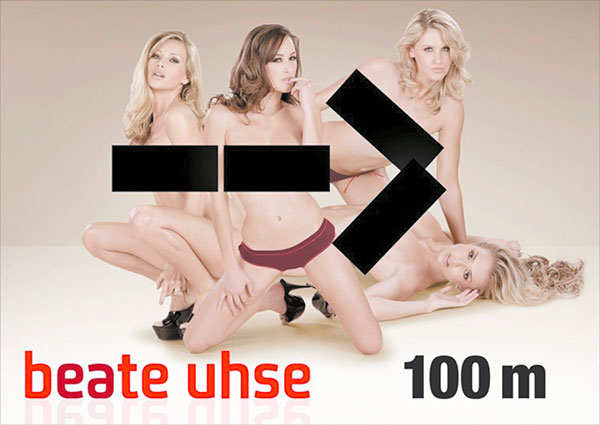
Pragmatics of the сhronotopes. Pragmatics is the semiotic discipline, which studies the specific signs used by the communicators depending on their attitude to reality.
The theory of ad appeals (the main psychological drive (motif) for the customers) is an integral part of pragmatics. The reason is that the commodity (product) is one and the same, but different consumers (women, men, with different attitudes, with different education, from different cultures — Russians, French, etc.) are attracted to goods because of various emotional and rational reasons. That is why the admen communicate the goods in different ways for the numerous consumer groups and the ad specialists use dissimilar signs accordingly.
If the consumers are young and educated, the postmodern appeals (those on ecology, mutual understanding, etc.) are very appropriate. Such ads have already been analysed (Fig. 12–14).
The most universal appeal is that of power — it maintains and nourishes the selfesteem of consumers. Women and men interpret the idea of power in different ways from the standpoints of toposes. For most of women the power is related to the beauty and luxury of internal spaces (Fig. 1), while men prefer to demonstrate muscles in dangerous places (Fig. 2, 17). Therefore, the female and male toposes are quite different.
Chronotope is frequently used in advertising. The obvious reason is that everything happens in some spatial and temporal frameworks.
Thanks to the chronoscope, admen can communicate certain meanings, which create preferences, and buying as a consequence. In this sense, the chronotope in marketing communications works similarly as in literature and in cinema.
This article also proves the fact that the chronotope can be interpreted by the standpoints of all concepts of alphabetics, semantics, syntactics and pragmatics.
Chronotope is not only a concept of theory of literature, but a semiotic notion as well.
Chronotope is also an efficient ad strategy or approach. Because of this the admen must know well the theory of literature, general linguistics and semiotics. If so, the admen can use the concepts of these three sciences successfully in their every day work.
The importance of the great Mikhail Bakhtin’s studies for advertising and for the other marketing communications is not limited only to the chronotope.
Advertising and other marketing communications are interactive (particularly the digital ones) and they are based mainly on the positive, democratic and joyful attitude to life. These phenomena correspond with the dialogue and the carnival culture, which are two of the main directions in Bakhtin’s works.
For this reason, in some of the next articles on Mikhail Bakhtin and the importance of his works for advertising, scientists should analyze these two aspects — the dialogue and the carnival culture and their use in advertising and in other marketing communications.
1 The following link contains valuable information on Mikhail Bakhtin and the concept “chronotope”: https://yandex.kz/search/?text=%D0%91%D0%B0%D1%85%D1%82%D0%B8%D0%BD%20%D1%85%D1%80%D0%BE%D0%BD%D0%BE%D1%82%D0%BE%D0%BF&lr=165 (accessed: 26.05.2018). The following link contains valuable information on time and space in literature: https://yandex.kz/search/?text=%D0%B2%D1%80%D0%B5%D0%BC%D1%8F%20%D0%B8%20%D0%BF%D1%80%D0%BE%D1%81%D1%82%D1%80%D0%B0%D0%BD%D1%81%D1%82%D0%B2%D0%BE%20%D0%B2%20%D0%BB-%D0%B8%D1%82%D0%B5%D1%80%D0%B0%D1%82%D1%83%D1%80%D0%B5&lr=165 (accessed: 26.05.2018). The following link contains valuable information on Western scientific books analysing time and space in literary theory: https://www.google.com/search?tbm=bks&q=time+and+space+in+literature+theory (accessed: 26.05.2018).
Andersen, G., Aijmer, K. (2012). Pragmatics of Society. Berlin: Walter de Gruyter.
Azcona, М. (2010). The Multi-Protagonist Film. Hoboken: John Wiley & Sons.
Beasley, R., Danesi, M. (2002). Persuasive Signs: The Semiotics of Advertising. Berlin: Walter de Gruyter.
Bemong, N., Borghart, P., Dobbeleer, М., Demoen, K. (Eds.) (2010). Bakhtin’s Theory of the Literary Chronotope: Reflections, Applications, Perspectives. Eekhout: Academia Press.
Bublitz, W., Norrick, N. R. (2011). Foundations of Pragmatics. Berlin: Walter de Gruyter.
Clark, K., Holquist, M. (1984). Mikhail Bakhtin. Cambridge: Harvard University Press.
Eliade, М. (1964). Cosmos and History. Myth of Eternal Return. New York: Harper & Brothers.
Giv.n, T. (2001). Syntax: An Introduction. Amsterdam: John Benjamins Publishing.
Goddard, C. (2008). Cross-linguistic Semantics. Amsterdam: John Benjamins Publishing.
Hintikka, J. (1994). Aspects of Metaphor. Berlin/Heidelberg: Springer Science & Business Media.
Kearns, K. (2011). Semantics. New York: Palgrave Macmillan.
Lakoff, G., Johnson, М. (1980). Metaphors we Live by. Chicago: The University of Chicago Press.
Lethaby, W. R. (1892). Architecture, Mysticism and Myth. London: Percival &.
Lее, J. C. (2014). The Doublespeak of Empowerment Tropes: Commercial Discourse in the Rhetoric of Health Insurance. Journal of Popular Culture, 47 (5), 978–989.
Pinker, S., Mehler, J. (1988). Connections and Symbols. Cambridge MA: MIT Press.
Renfrew, A. (2014). Mikhail Bakhtin. Abingdon: Routledge.
Ricoeur, P. (2004). The Rule of Metaphor. The Creation of Meaning in Language. Abingdon: Routledge.
Rossolatos, G. (2014). Conducting Multimodal Rhetorical Analysis of TV Ads with Atlas.ti 7. Multimodal Communication. 3 (1), 51–84.
Rossolatos, G. (2013). Rhetorical Transformations in Multimodal Advertising Texts: From General to Local Degree Zero. Hermes — Journal of Language and Communication in Business, 50, 97–118.
Umiker-Sebeok, J. (2012). Marketing and Semiotics: New Directions in the Study of Signs for Sale. Berlin: Walter de Gruyter.
Zantides, E. (2016) Visual Metaphors in Communication: Intertextual Semiosis and Dejа Vu in Print Advertising. Romanian Journal of Communication and Public Relations. Vol. 18, 3 (39), 65–74.
Статья поступила в редакцию 15 сентября 2018 г.;
рекомендована в печать 22 октября 2018 г.
© Санкт-Петербургский государственный университет, 2018
Received: September 15, 2018
Accepted: October 22, 2018
